Aerospace Manufacturer Hones in on Process to Increase Productivity 300%
Sonic Industries (Torrance, California), part of the Sargent Aerospace & Defense Company, manufactures high-strength, safety-related fasteners and precision round bar components. Recently, the company turned to a Sunnen honing system to achieve performance-critical ID tolerances and finishes on life-saving fuse pins, reducing cycle times by 75% in the process.
Knowing when to "hold 'em," and when to "fold 'em" takes on new meaning when referring to the fuse pins designed to hold a jet engine on a wing, but to break away in emergency situations, allowing the engine to separate from the wing to prevent catastrophic structural failure and fires. That is the performance dilemma faced by the highly-engineered, precisely-manufactured aerospace components produced by Sonic Industries.
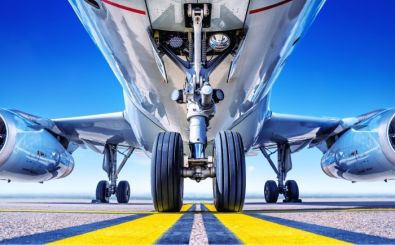
Sonic products can be found on a number of currently active military and commercial fixed-wing aircraft.
To achieve this delicate "hold-or-fold" balance, Sonic relies on a Sunnen vertical honing system to produce the 5-to-7-micron ID tolerance and proprietary finish critical to the part's performance. The CNC-controlled SV-1000 also allowed Sonic to meet increased customer demand when it replaced a manual honing system, reducing cycle times from 40 minutes to 10 and increasing productivity from nine to 40 parts per day.
Sargent has been supplying specialty fasteners, self-lubricated lined bearings, precision engine rings, and hydraulic controls for more than 30 years on both commercial and military platforms; virtually every major commercial jetliner, military fighter, bomber, submarine and cargo plane has included Sargent products.
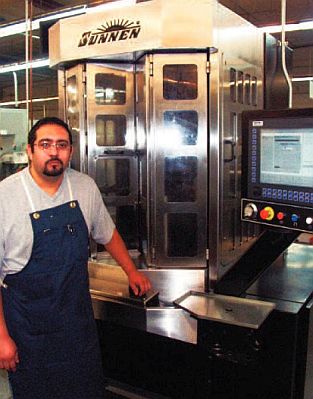
Sonic used to hone fuse pins manually; the CNC-controlled, automated honing machine helped increase productivity from nine to 40 parts per day.
The ubiquity of Sonic fuse pins in today's commercial and military aircraft, and the importance of their proper performance, make the design and manufacture of these small parts as important to air travel safety as the integrity of a wing or soundness of an engine.
The fuse pin, also known as a shear pin, affixes the engine onto the wing via the pylon -- the structural component connecting the jet engine to the wing spar. When necessary, it allows the engine to break away under an impact load in the event of a crash or other hard landing, protecting the fuselage from engine fire caused by a dragged engine.
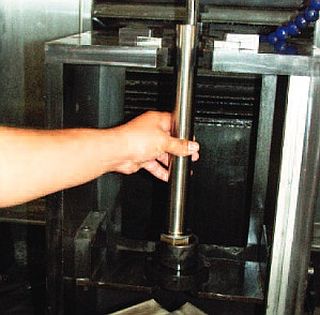
Sonic's fuse pins have various diameters and lengths up to 23 inches.
Fuse pins serve a similar function for landing gear assemblies. Located in a structural assembly nicknamed the "doghouse fitting," fuse pins attach the landing gear to the wing and are designed to "fail" in the event of an extreme hard landing, allowing the main landing gear to safely break away from the airplane and prevent rupture of the fuel tanks inside the wing box.
Previous versions of fuse pins were designed with a notch that would act as a "weak spot" and facilitate them breaking on impact. However, a cylindrical pin with a notch is more vulnerable to excessive corrosion and fatigue damage. Therefore, fuse pins were re-engineered without the notch, making ID tolerance and finish the critical factors in their performance.
Fuse pins are made of steel and stainless steel alloys including 318 and 15-5; they have various diameters and lengths up to 23 inches. The pins start as a bar forged to specific geometry and are gun-drilled, then bored to a rough preliminary hole size. The parts are then heat-treated and tested to establish the shear value, and the entire lot is processed to final machining and finish grind on the OD. The heads are finish machined with slots or hexes. The pins are then bored to a specified size and honed to establish the critical ID size, geometry and surface finish required for proper performance.
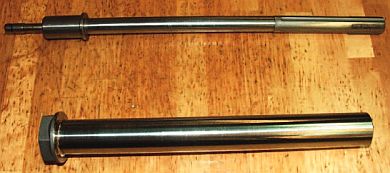
The fuse pins attach jet engines onto the wing and break away in emergency situations to prevent catastrophic structural damage and/or fires.
"We needed to increase productivity and decided automating the honing process was the best way to accomplish it," said Roy Franks, Facility Manager of Sonic Industries. "Before purchasing the system, we conducted time studies with Sunnen, and indications were we could achieve the production levels we were looking for. The machine has since exceeded the time study estimates and the finish is superior to the previous manual-honing method."
While the OD is machined to standard dimensional tolerances and is repeatable, the ID must meet tolerances of 5-to-7 microns (0.0002 in. to 0.0003 in.). The ID surface finish of the fuse pins is also critical, and while the precise surface finish specs are proprietary information, Franks says they fall in the range of 8 to 16 RMS.
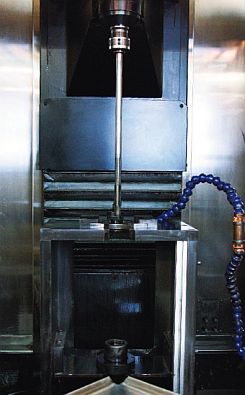
Sonic uses Sunnen MMT superabrasive tools, which last five times longer than conventional designs and can reduce per-part cost by 30%.
Consistent size and finish of the ID are very important, as size variations or surface irregularities could affect the performance of the pin. The ID geometry of the fuse pins can vary from a thru hole to a blind hole with an angle and a radius, or just a bottom radius.
Automating the honing process has freed up Sonic machine operators to attend to more than one machine. "With the manual hones our process was hone a little, then check the part, hone a little more, then check the part again." said Franks. "With the CNC hone we 'dial in' the settings on the machine and 99% of the time the part comes out to spec. That means the operator can have one eye on the honing machine and one on another piece of equipment."
After honing, parts are measured using a scanning air gage. Sonic was able to achieve a more than 300 percent increase in productivity, but Franks thinks that number can climb even higher. "We didn't get the rotary table with this machine, and we could bump up productivity even more by loading three parts in the rotary table and continuing to hone parts while others are being checked."
Want more information? Click below.
Rate this article
View our terms of use and privacy policy ::m::